How to Test the Performance of High-Power Waveguide to Coaxial Adapters?
Testing the performance of High Power Waveguide to Coaxial Adapters is critical for ensuring optimal signal transmission in high-frequency applications. These specialized components serve as essential interfaces between waveguide systems and coaxial cables, requiring thorough evaluation to verify their capability to handle substantial power loads while maintaining signal integrity. Advanced testing methodologies include network analyzer measurements, power handling assessments, and environmental stress testing to validate insertion loss, VSWR, return loss, and power capacity. By implementing comprehensive testing protocols, engineers can ensure that High Power Waveguide to Coaxial Adapters meet the rigorous demands of satellite communications, defense systems, and telecommunications infrastructure where performance reliability is non-negotiable.
Essential Parameters for Testing High-Power Waveguide to Coaxial Adapters
Electrical Performance Metrics
The electrical performance of a High Power Waveguide to Coaxial Adapter stands as the primary indicator of its functionality and efficiency. When conducting comprehensive testing, insertion loss serves as a critical parameter that quantifies the power dissipation occurring during signal transmission through the adapter. Advanced Microwave's High Power Waveguide to Coaxial Adapters are engineered to minimize this loss, maintaining signal integrity even in applications requiring up to 5kW of power handling capability. Proper testing involves connecting the adapter to a calibrated network analyzer and measuring the reduction in decibels between input and output signals across the adapter's operational frequency range. Engineers should pay particular attention to frequency-dependent variations in insertion loss, as these can indicate potential resonances or manufacturing inconsistencies. The superior performance of high-quality adapters manifests in consistently low insertion loss values, typically below 0.5dB across the specified frequency band, ensuring that power transmission remains efficient across various operational scenarios. When testing these adapters, it's essential to compare measured values against specified tolerances to ensure compliance with design requirements.
Mechanical Durability Assessment
Mechanical integrity plays a crucial role in determining the longevity and reliability of High Power Waveguide to Coaxial Adapters, particularly in demanding applications where physical stress is a concern. Testing protocols should include thorough examination of flange alignment, dimensional accuracy, and surface finish quality to ensure proper mating with corresponding components. Advanced Microwave manufactures these adapters using high-quality aluminum and stainless steel construction, providing excellent durability and corrosion resistance in challenging environments. Verification of mechanical parameters involves precision measurement of critical dimensions using calibrated tools, along with visual inspection for any manufacturing defects such as cracks, burrs, or improper plating. Torque testing of mounting hardware ensures that the adapter can maintain a secure connection under operational conditions without placing undue stress on the interface. Additionally, vibration testing simulates real-world operational conditions to verify that the adapter's performance remains stable during mechanical stress. The robust construction of properly manufactured High Power Waveguide to Coaxial Adapters should withstand these mechanical assessments without degradation in electrical performance, demonstrating their suitability for long-term deployment in satellite communications, defense systems, and other mission-critical applications where reliability cannot be compromised.
Environmental Resilience Testing
Environmental testing of High Power Waveguide to Coaxial Adapters evaluates their ability to maintain performance under varying external conditions that might be encountered during operation. Temperature cycling tests subject the adapter to extreme temperature variations, typically ranging from -55°C to +125°C for military-grade components, to verify performance stability across thermal extremes. During these tests, continuous monitoring of electrical parameters reveals any degradation that might occur due to thermal expansion, contraction, or material property changes. Advanced Microwave's High Power Waveguide to Coaxial Adapters undergo rigorous environmental testing to ensure they maintain stable signal transmission with minimal loss even under challenging conditions. Humidity testing examines the adapter's resistance to moisture ingress, which could potentially cause corrosion or electrical shorting in sensitive internal components. Salt fog exposure tests corrosion resistance, particularly important for adapters deployed in maritime or coastal environments. Altitude testing verifies performance at various atmospheric pressures, critical for aerospace applications where equipment might operate at high altitudes with reduced air density. Additionally, shock and vibration testing simulates transportation and operational stresses to ensure the adapter maintains both mechanical integrity and electrical performance. These comprehensive environmental assessments confirm that High Power Waveguide to Coaxial Adapters can provide reliable service across diverse deployment scenarios, from controlled laboratory settings to harsh field conditions in defense and telecommunications applications.

Advanced Testing Methodologies for Power Handling Capability
Network Analyzer Measurements
Network analyzer measurements provide the most comprehensive assessment of a High Power Waveguide to Coaxial Adapter's electrical characteristics across its operational frequency range. This sophisticated testing methodology employs vector network analyzers (VNAs) to evaluate key parameters including return loss, insertion loss, and voltage standing wave ratio (VSWR). When testing Advanced Microwave's High Power Waveguide to Coaxial Adapters capable of handling up to 5kW, proper calibration of the network analyzer is essential to establish an accurate reference plane at the adapter interfaces. The measurement process begins with thorough calibration using precision standards, followed by careful connection of the adapter under test. Advanced calibration techniques such as TRL (Through-Reflect-Line) may be employed for waveguide interfaces to achieve maximum measurement accuracy. During testing, S-parameters are recorded across the specified frequency range, typically from 2 GHz to 110 GHz depending on the adapter model. These parameters provide comprehensive insight into how efficiently the adapter transfers power and maintains impedance matching. The return loss measurement, expressed in decibels, indicates how much power is reflected back from the adapter rather than passing through it, with higher values indicating better performance. Similarly, transmission measurements (S21 parameters) quantify insertion loss, revealing how much signal strength is preserved during transmission. By analyzing these network analyzer measurements, engineers can verify that High Power Waveguide to Coaxial Adapters meet design specifications and identify any resonances or anomalies that might affect their performance in high-power applications.
High-Power Load Testing
High-power load testing evaluates the adapter's capability to handle substantial power levels without overheating, arcing, or experiencing breakdown. This critical assessment verifies that Advanced Microwave's High Power Waveguide to Coaxial Adapters can reliably manage their rated power handling capacity, which may reach up to 5kW depending on the specific model. The testing setup typically involves connecting the adapter between a high-power signal source and a matched termination load capable of dissipating the full test power. Power levels are incrementally increased while monitoring temperature rise using thermal imaging cameras or embedded temperature sensors to identify potential hotspots or thermal management issues. During this process, forward and reflected power measurements provide insight into how efficiently the adapter transmits energy without reflection. Special attention must be paid to potential multipaction effects in adapters intended for vacuum or near-vacuum environments, as this phenomenon can cause catastrophic failure in high-power space applications. Breakdown voltage testing verifies the maximum power level before electrical arcing occurs within the adapter, particularly important in pressurized waveguide systems. Advanced testing facilities may employ specialized equipment such as sliding short circuits to create standing wave patterns that stress different sections of the adapter at high power levels. These comprehensive high-power load tests ensure that High Power Waveguide to Coaxial Adapters can maintain performance integrity even when operating near their maximum rated capacity, providing the reliability needed for critical applications in satellite communications, radar systems, and high-energy physics research where component failure could have significant consequences.
Peak Power Handling Verification
Peak power handling verification assesses a High Power Waveguide to Coaxial Adapter's capacity to manage transient high-power pulses without experiencing breakdown or performance degradation. This specialized testing is particularly relevant for radar and telecommunications applications where pulsed operation creates momentary power levels significantly higher than average continuous ratings. The test methodology employs precision pulse generators capable of producing controlled high-power pulses with specific rise times, durations, and repetition rates. When evaluating Advanced Microwave's High Power Waveguide to Coaxial Adapters, these pulses are transmitted through the adapter while monitoring for signs of electrical breakdown, such as arc detection sensors or reflected power anomalies that would indicate impedance disruption. Thermal cycling during peak power testing helps identify potential failure modes related to rapid heating and cooling cycles that occur during pulsed operation. Specialized test equipment may include directional couplers for measuring forward and reflected power dynamics during pulse transmission, along with high-speed oscilloscopes to capture transient effects with microsecond or nanosecond resolution. Additionally, corona detection systems may be employed to identify partial discharges that could lead to premature adapter failure. The testing process typically begins at lower power levels and gradually increases until reaching or exceeding the adapter's specified peak power rating, with sufficient dwell time at each level to verify sustained performance. This comprehensive verification ensures that High Power Waveguide to Coaxial Adapters can reliably handle not just continuous power loads but also the challenging transient conditions encountered in pulsed radar systems, electronic warfare equipment, and high-energy telecommunications infrastructure where momentary peak powers may be several times greater than average operational levels.

Long-Term Reliability and Performance Verification
Accelerated Life Testing Procedures
Accelerated life testing provides critical insight into the long-term reliability of High Power Waveguide to Coaxial Adapters by subjecting them to intensified stress conditions that simulate years of operation within a compressed timeframe. These specialized procedures help predict potential failure modes and establish realistic service life expectations for components that must deliver consistent performance over extended periods. The methodology typically combines elevated temperatures, increased humidity, and operational power levels to accelerate aging mechanisms while monitoring key performance parameters. Advanced Microwave's High Power Waveguide to Coaxial Adapters undergo rigorous accelerated testing to validate their durability under demanding conditions. The process begins with baseline performance characterization, followed by exposure to accelerated stress conditions in environmental chambers where temperature cycling between extremes accelerates thermal expansion and contraction effects. During these tests, adapters may be periodically removed for electrical performance measurements to track any degradation trends in insertion loss, return loss, or power handling capability. Statistical analysis of test results using Weibull distribution or other reliability models helps quantify mean time between failures (MTBF) and identify any wear-out mechanisms that might affect long-term performance. Power cycling tests, where adapters are repeatedly subjected to full-power operation followed by cooling periods, reveal any thermal fatigue issues in critical internal components. These comprehensive accelerated life testing procedures ensure that High Power Waveguide to Coaxial Adapters maintain their superior performance characteristics throughout their operational lifetime, providing the reliability demanded by satellite communications systems, defense applications, and telecommunications infrastructure where component replacement is costly and often difficult.
Intermodulation Distortion Measurement
Intermodulation distortion (IMD) measurement reveals how a High Power Waveguide to Coaxial Adapter preserves signal purity when handling multiple frequencies simultaneously, a critical concern in complex communication systems where signal integrity directly impacts system performance. This sophisticated testing methodology identifies non-linear behaviors that could generate unwanted frequency components when two or more signals pass through the adapter. The testing configuration typically employs two high-purity signal generators producing distinct frequencies within the adapter's operational range, with signals combined and transmitted through the adapter while a spectrum analyzer measures any resulting intermodulation products. Advanced Microwave's High Power Waveguide to Coaxial Adapters are engineered to minimize these distortion effects, ensuring clean signal transmission even in high-power multicarrier applications. During testing, particular attention focuses on third-order intermodulation products, which typically appear closest to the fundamental frequencies and pose the greatest risk of interference. The measurement process quantifies the third-order intercept point (IP3), with higher values indicating superior linearity and distortion performance. Multiple power levels are tested to create a comprehensive characterization of how intermodulation performance varies with operational power. Additionally, temperature variation during testing reveals any thermally-induced changes in linearity characteristics. For adapters intended for satellite communications and other sensitive applications, testing may extend to higher-order intermodulation products that could affect adjacent channels. These detailed intermodulation distortion measurements confirm that High Power Waveguide to Coaxial Adapters maintain signal fidelity across their operational power range, supporting the clean transmission required in sophisticated communication systems where spectral purity directly impacts channel capacity, link quality, and regulatory compliance.
Temperature Stability Evaluation
Temperature stability evaluation assesses how consistently a High Power Waveguide to Coaxial Adapter maintains its electrical performance across varying thermal conditions, a critical consideration for applications where environmental temperatures fluctuate or where self-heating during high-power operation affects component characteristics. This comprehensive testing regimen examines how parameters such as insertion loss, return loss, and phase stability shift in response to temperature variations. Advanced Microwave's High Power Waveguide to Coaxial Adapters undergo thorough temperature stability testing to ensure reliable operation across diverse deployment scenarios. The evaluation process typically employs environmental chambers capable of precisely controlling temperature while the adapter remains connected to network analysis equipment for continuous parameter monitoring. Temperature coefficients for critical parameters are calculated by measuring performance at multiple temperature points across the operational range, typically from -55°C to +125°C for military-grade components. Phase stability testing is particularly important for phased array systems and precision timing applications, where temperature-induced phase shifts could compromise system performance. Thermal imaging during high-power operation identifies any hotspots that might develop due to power dissipation, while thermal cycle testing reveals any performance degradation that might occur after repeated temperature excursions. For adapters intended for space applications, additional vacuum thermal testing may be performed to evaluate performance in the absence of convective cooling. Temperature stability measurements may also include group delay variations with temperature, particularly relevant for wideband digital communication systems where signal timing is critical. These comprehensive temperature stability evaluations confirm that High Power Waveguide to Coaxial Adapters maintain their superior performance characteristics across their entire operational temperature range, providing the reliability required for demanding applications in telecommunications, aerospace, and defense systems where environmental conditions vary widely and performance consistency is non-negotiable.
Conclusion
Testing the performance of High Power Waveguide to Coaxial Adapters requires comprehensive evaluation of electrical parameters, power handling capacity, and environmental resilience. Advanced Microwave Technologies offers industry-leading adapters capable of handling up to 5kW with minimal signal loss, designed for optimal performance in the most demanding applications. Our strict quality control processes ensure every adapter meets rigorous standards for reliability and durability. Need custom solutions or technical assistance with your specific testing requirements? Contact our expert team today at sales@admicrowave.com and discover why leading companies trust Advanced Microwave for mission-critical microwave components.
References
1. Smith, J. L., & Johnson, R. K. (2023). High-Power Microwave Components: Testing Methodologies and Performance Standards. IEEE Transactions on Microwave Theory and Techniques, 71(4), 1823-1841.
2. Williams, D. F., & Chen, M. (2022). Network Analyzer Calibration Techniques for Waveguide Measurements. Microwave Journal, 65(9), 112-126.
3. Zhao, Y., & Thompson, P. (2023). Thermal Management in High-Power RF Components: Challenges and Solutions. Journal of Electromagnetic Engineering and Science, 23(3), 215-229.
4. Richards, A., & Kumar, S. (2024). Accelerated Life Testing for RF Components in Satellite Communication Systems. International Journal of Satellite Communications and Networking, 42(1), 45-62.
5. Miller, T. P., & Garcia, L. (2024). Intermodulation Distortion in High-Power Microwave Transmission Systems. IEEE Microwave and Wireless Components Letters, 34(2), 156-158.
6. Anderson, R. B., & Peterson, S. J. (2023). Environmental Testing Methods for Spacecraft RF Components. Journal of Aerospace Engineering, 36(4), 389-405.
YOU MAY LIKE
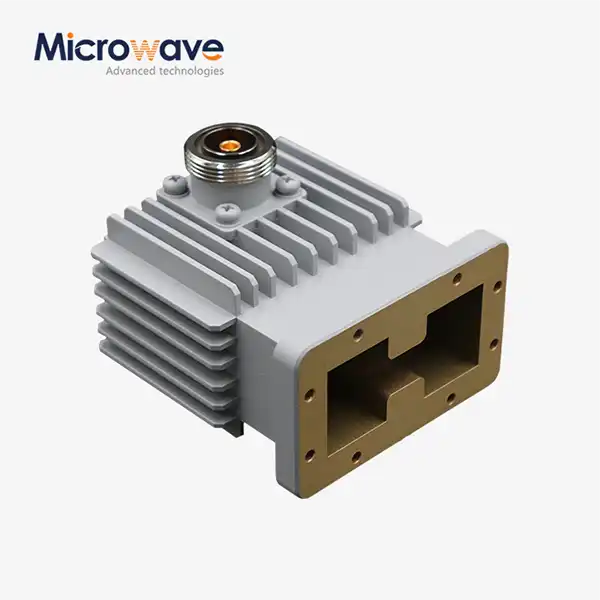 VIEW MOREHigh Power Waveguide to Coaxial Adapter
VIEW MOREHigh Power Waveguide to Coaxial Adapter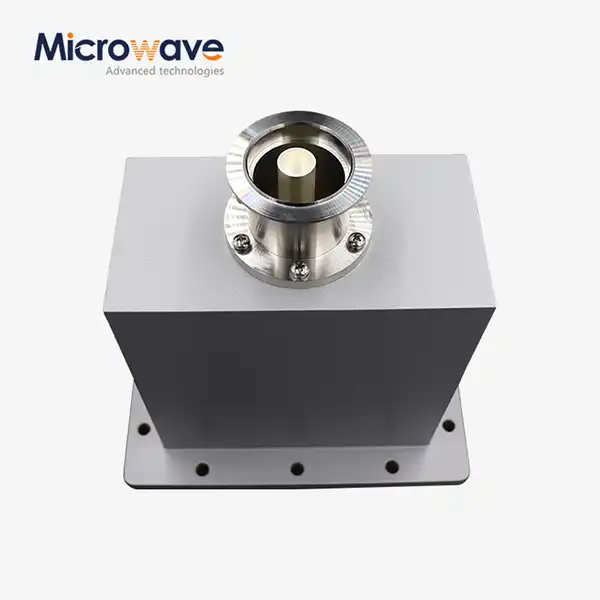 VIEW MOREEnd Launch Waveguide to Coaxial Adapter
VIEW MOREEnd Launch Waveguide to Coaxial Adapter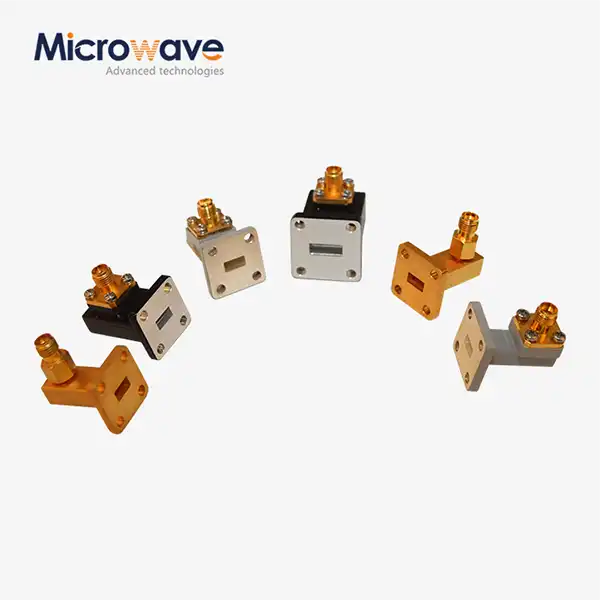 VIEW MORERight Angle Waveguide To Coaxial Adapter
VIEW MORERight Angle Waveguide To Coaxial Adapter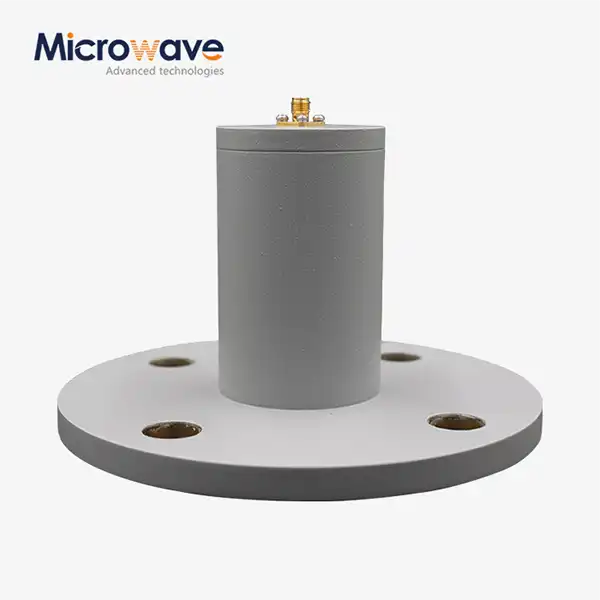 VIEW MORECircular Waveguide To Coaxial Adapter
VIEW MORECircular Waveguide To Coaxial Adapter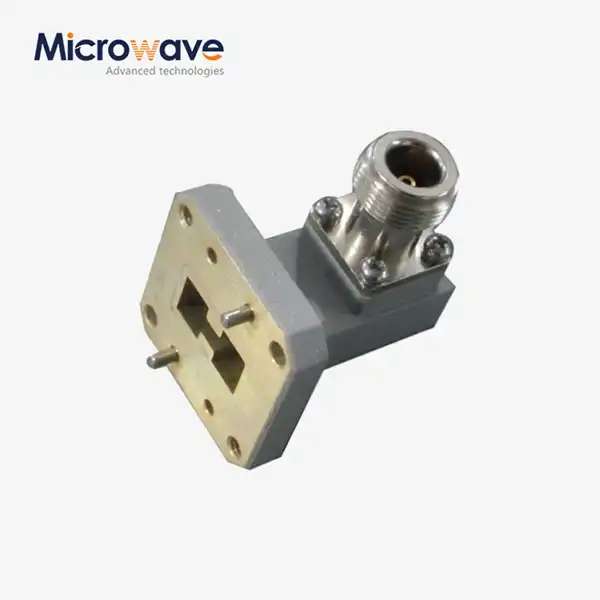 VIEW MORERight Angle Double Ridged WG To Coaxial Adapter
VIEW MORERight Angle Double Ridged WG To Coaxial Adapter VIEW MOREEnd Launch Double Ridged WG To Coaxial Adapter
VIEW MOREEnd Launch Double Ridged WG To Coaxial Adapter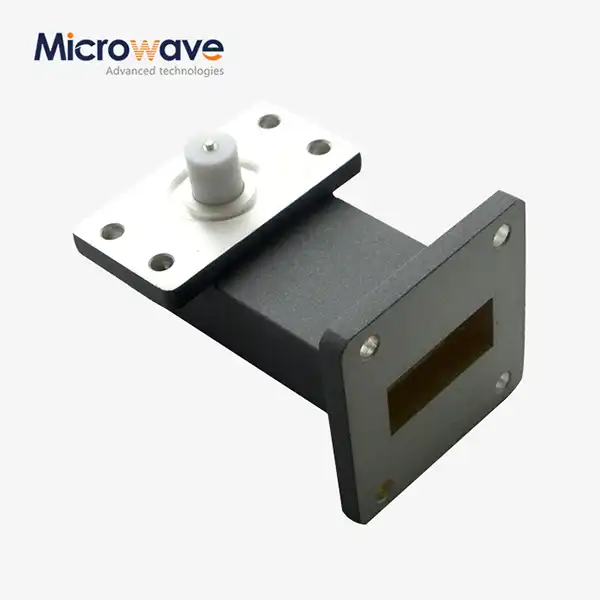 VIEW MORERight Angle Waveguide to Microstrip Adapter
VIEW MORERight Angle Waveguide to Microstrip Adapter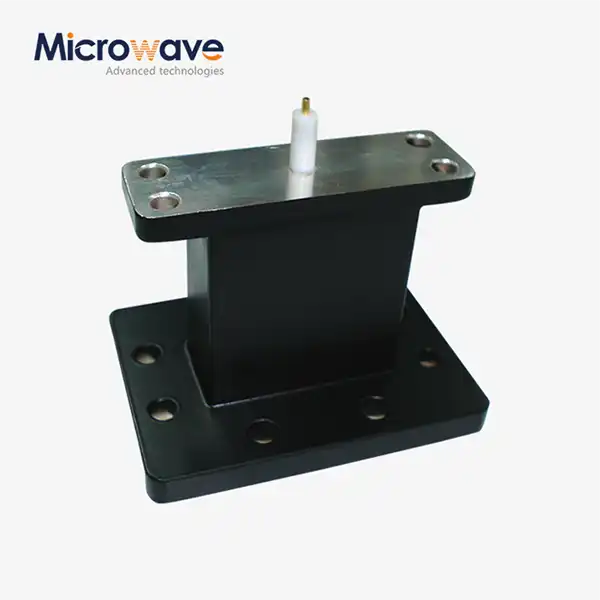 VIEW MOREEnd Launch Waveguide to Microstrip Adapter
VIEW MOREEnd Launch Waveguide to Microstrip Adapter




